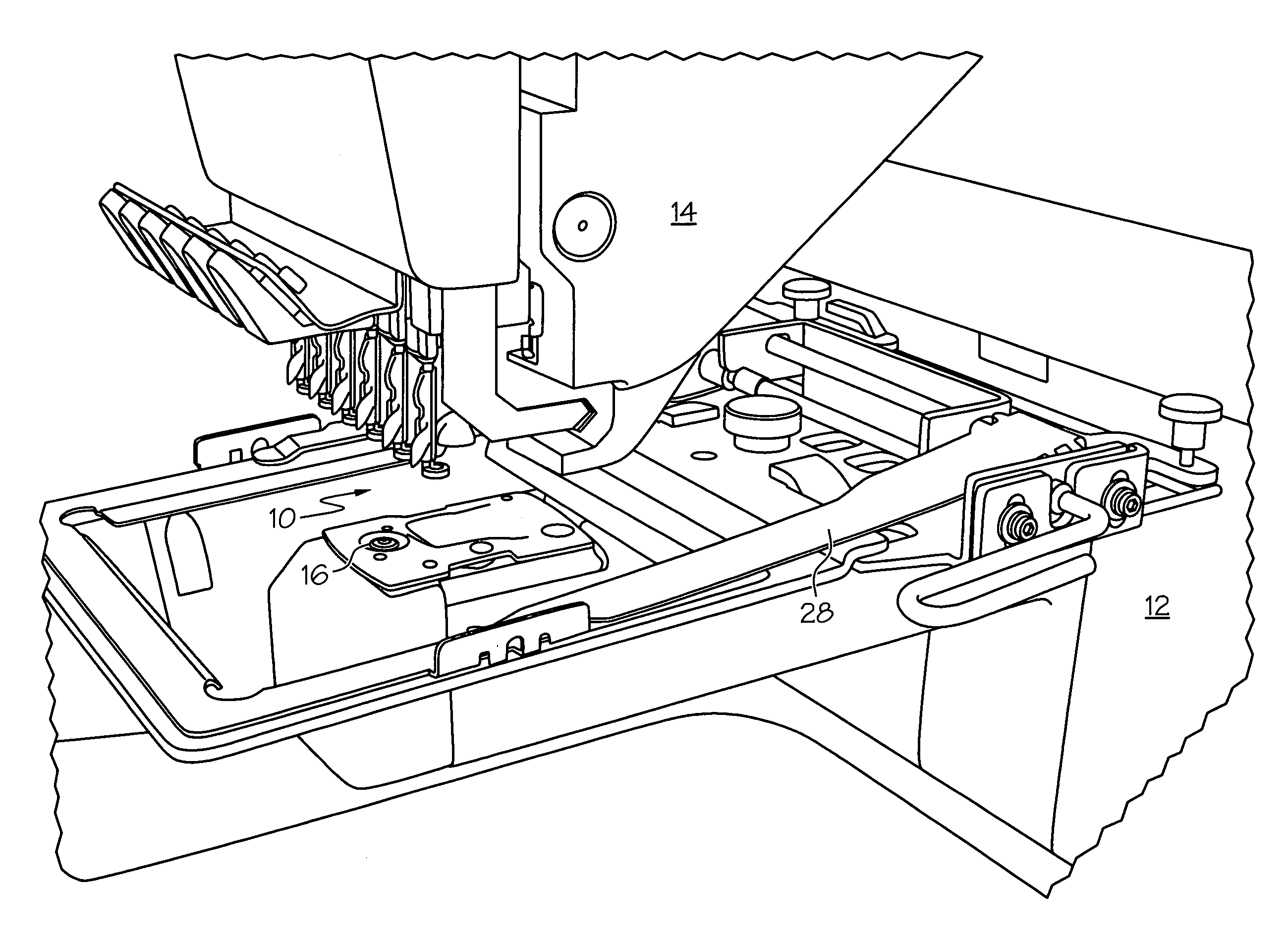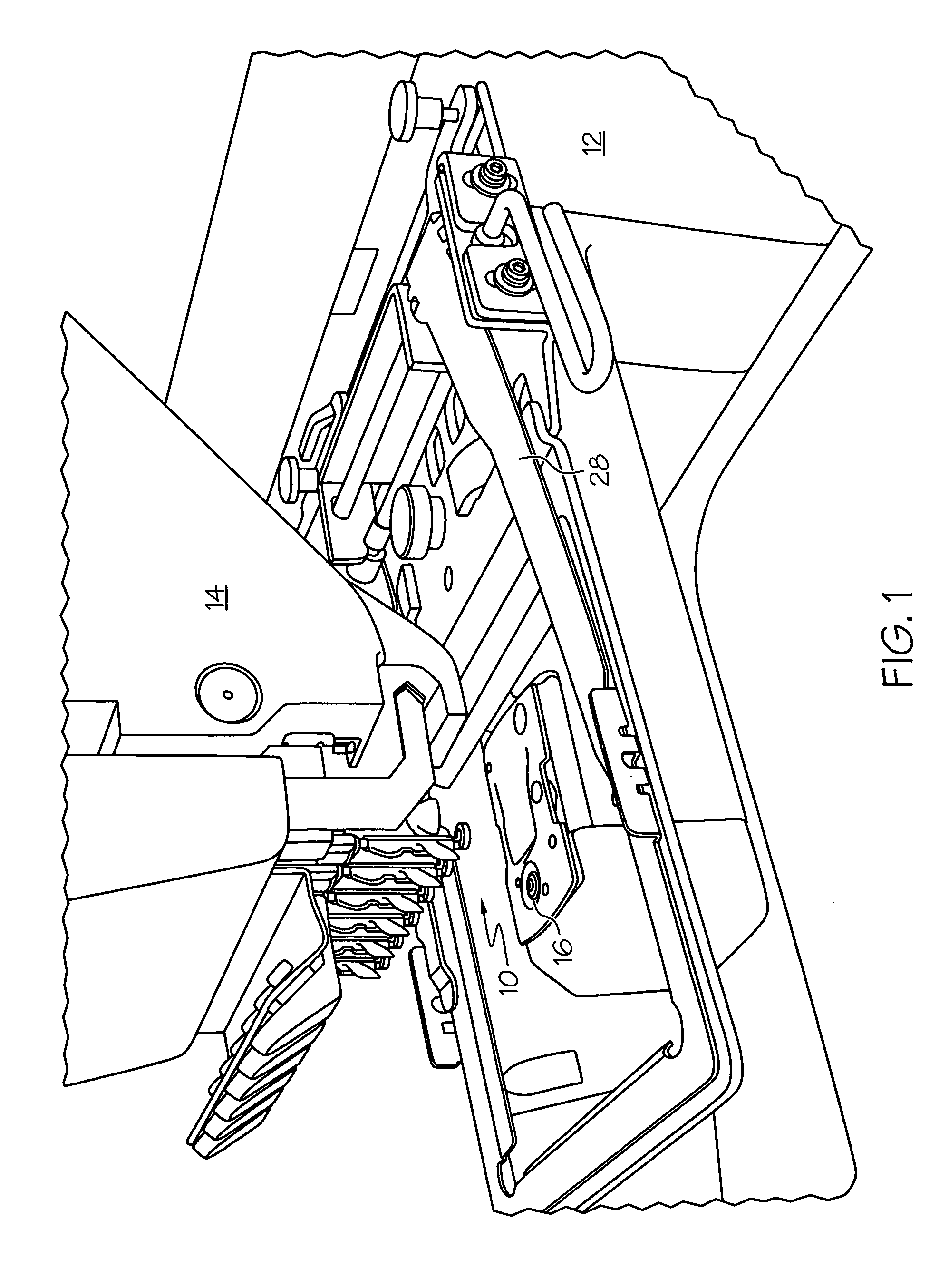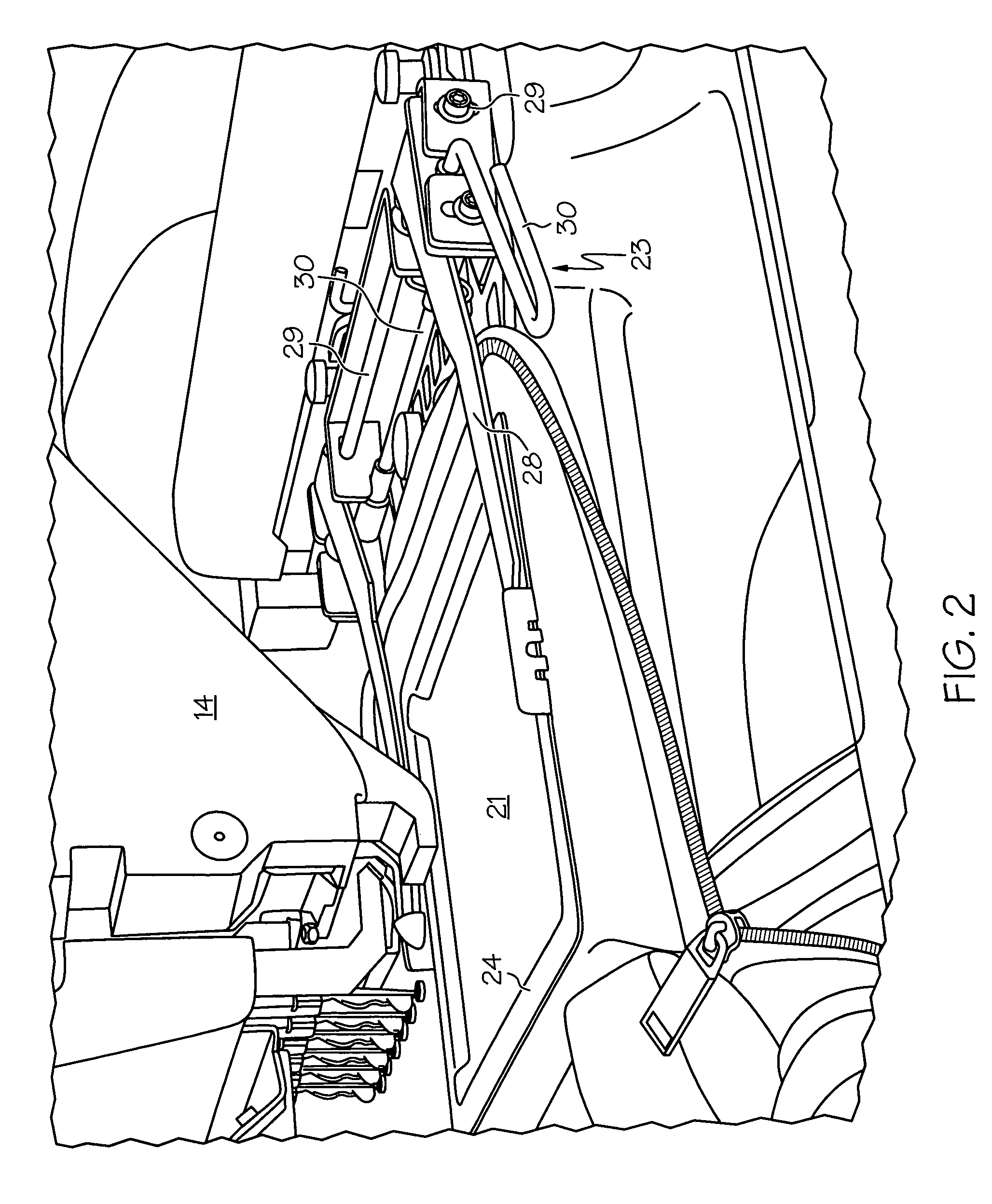Low profile clamp for embroidery machine
a technology of embroidery machine and clamping mechanism, which is applied in the field of embroidery machines, can solve the problems of large and bulky clamping mechanism, persistent problem, and substantial damage to embroidery machines, and achieve the effect of simplifying the clamping mechanism
- Summary
- Abstract
- Description
- Claims
- Application Information
AI Technical Summary
Benefits of technology
Problems solved by technology
Method used
Image
Examples
Embodiment Construction
[0036]Referring now to the drawings, FIG. 1 shows one form of an embroidery machine 10 constructed in accordance with the principles of the present invention. The machine, which is conventional except for the low profile clamp, which is described in detail below, includes a base 12, which supports a head 14 extending outwardly therefrom. A plurality of presser feet, collectively referenced by the numeral 16, extend downwardly from the head 14. As those skilled in the art will readily appreciate, the presser feet are movable from a first retracted position (shown in FIG. 1) to an extended position where they engage an article to be embroidered. Each of the presser feet 16 is associated with a needle 18. The outer end of each of the needles 18 pass though a fabric or other article (not shown in FIG. 1, see FIG. 2) interposed between the presser foot 16 and a throat plate 20. As will be apparent to those skilled in the art, the lower (in the illustrated orientation) end of the needles ...
PUM
 Login to View More
Login to View More Abstract
Description
Claims
Application Information
 Login to View More
Login to View More - R&D
- Intellectual Property
- Life Sciences
- Materials
- Tech Scout
- Unparalleled Data Quality
- Higher Quality Content
- 60% Fewer Hallucinations
Browse by: Latest US Patents, China's latest patents, Technical Efficacy Thesaurus, Application Domain, Technology Topic, Popular Technical Reports.
© 2025 PatSnap. All rights reserved.Legal|Privacy policy|Modern Slavery Act Transparency Statement|Sitemap|About US| Contact US: help@patsnap.com



